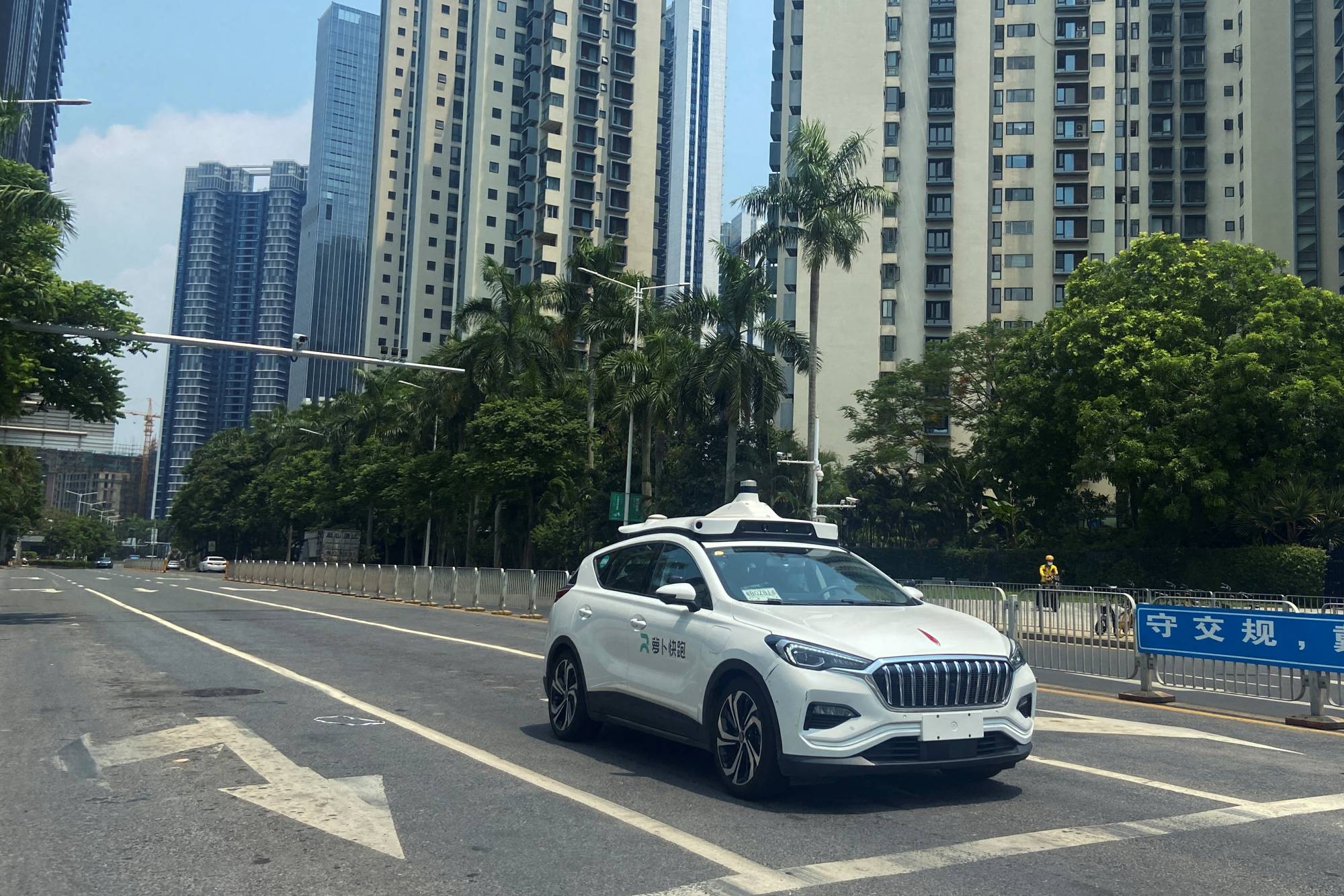
BEIJING: In a recent incident that has sparked a significant debate online, a driverless ride-hailing car operated by Chinese tech giant Baidu collided with a pedestrian in the city of Wuhan on July 7. The incident has drawn considerable attention, with many social media users siding with the carmaker, emphasizing that the pedestrian was reportedly crossing the street against the traffic light.
Baidu issued a statement to Chinese media, detailing that the autonomous vehicle began to move forward when the traffic light turned green. According to Baidu, the car made minor contact with a pedestrian, who was subsequently taken to a hospital for an examination. Fortunately, the medical evaluation revealed no obvious external injuries.
Images of the incident quickly circulated online, showing a person sitting on the street in front of the driverless car, which was equipped with rooftop sensors. The incident highlights the ongoing challenges faced by autonomous driving technology, especially in navigating complex real-world scenarios.
| Detail | Information |
|---|---|
| Date | July 7 |
| Location | Wuhan, China |
| Company Involved | Baidu |
| Vehicle | Driverless ride-hailing car (Apollo Go) |
| Pedestrian’s Condition | No obvious external injuries |
| Social Media Reaction | Largely supportive of Baidu |
According to Yicai, a Chinese financial news outlet, the incident underscores a critical issue for autonomous driving technology: its ability to handle unconventional behavior from other road users, such as pedestrians or vehicles violating traffic laws. An expert quoted by Yicai pointed out that while the technology has advanced significantly, it still has limitations when it comes to responding to unpredictable human actions.
Baidu, a leading player in the development of autonomous driving technology in China, operates its largest robotaxi fleet of 300 cars in Wuhan. This city, which was the epicenter of the first major outbreak of COVID-19 in early 2020, now serves as a key testing ground for Baidu’s autonomous vehicles.
In its statement, Baidu stressed that the autonomous car adhered to traffic rules by moving when the light turned green. Social media reactions, as reported by the English-language Shanghai Daily newspaper, largely supported Baidu. Many commenters argued that the pedestrian was at fault for crossing against the light, thereby breaking traffic laws.
Some of the key points from the social media discussions include:
- Law Adherence: Many users highlighted the importance of following traffic laws and noted that the pedestrian’s actions were illegal.
- Technology Trust: A number of comments expressed confidence in Baidu’s autonomous driving technology, suggesting that such incidents are exceptions rather than the rule.
- Pedestrian Responsibility: There was a strong sentiment that pedestrians need to be more aware and cautious when interacting with autonomous vehicles.
- Pedestrian’s Fault: Emphasis on the pedestrian crossing against the light.
- Support for Baidu: General public support for Baidu’s adherence to traffic laws.
- Technological Challenges: Recognition of the limitations of autonomous driving technology in unpredictable scenarios.
- Future Improvements: Discussions about potential improvements in pedestrian detection and response systems in driverless cars.
Baidu’s autonomous ride-hailing service, known as Apollo Go, operates not only in Wuhan but also in limited parts of three other major Chinese cities: Beijing, Shenzhen, and Chongqing. The service represents a significant step forward in the deployment of autonomous vehicles in urban environments.
In May, Baidu launched the sixth generation of its driverless taxi, claiming to have reduced the unit cost by more than half to under US$30,000. This development is seen as a crucial milestone in making autonomous ride-hailing services more economically viable and scalable.
The incident in Wuhan is a reminder of the complexities and challenges that come with integrating autonomous vehicles into everyday traffic. While the technology has made remarkable strides, ensuring the safety of all road users—both human and automated—remains a top priority.
Experts suggest that further advancements in AI and machine learning will be essential to improve the decision-making capabilities of autonomous vehicles, especially in scenarios involving unexpected human behavior. Continuous testing and real-world applications are critical to refining these systems.
As Baidu and other tech giants continue to push the boundaries of autonomous driving technology, incidents like the one in Wuhan provide valuable lessons and highlight the need for ongoing improvements. The public’s reaction, largely supportive of Baidu in this case, underscores the importance of adhering to traffic laws and the growing trust in autonomous vehicle technology.
The journey towards fully autonomous transportation is complex and fraught with challenges, but each step forward brings us closer to a future where driverless cars are a safe and integral part of our daily lives. For now, the focus remains on enhancing the technology’s ability to handle the myriad of real-world situations it will inevitably encounter.
Featured Image courtesy of The Japan Times
